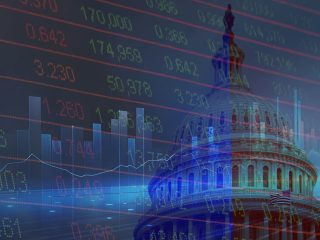
The Motley Fool: What’s too many?

Ask the Fool: What’s too many?
Q: Is it possible to own too many shares of one stock? — M.A., Winona, Minnesota
A: The number of shares you own doesn’t matter that much; think instead of value. For example, whether you own 3 shares or 3,000 shares of a certain stock, if they make up 50% of your portfolio, you’ve got too many eggs in one basket.
A stock’s price doesn’t mean too much by itself, either. For example, there isn’t much difference between owning 500 shares of a $10 stock (total value: $5,000) or 10 shares of a $500 stock (total value: $5,000). The $10 stock might actually be overvalued, while the $500 stock might be a bargain, about to quadruple in value over the coming decade.
While it’s important to diversify and not invest too much in any one stock or industry, you might want to avoid diversifying so much that you have only a tiny portion of your portfolio in any one stock. In such a case, even if the stock triples, it won’t give your portfolio much of a bump.
Q: What’s the current capital gains tax rate? — R.B., Santa Maria, California
A: It varies, depending on your income level and how long you owned the asset before selling. Short-term capital gains, from assets held a year or less, are taxed as ordinary income. Long-term gains, from assets held for more than a year, face a 0% tax rate for those whose income is sufficiently low, a 15% tax rate for many people and a 20% rate for high-income folks.
Remember that you may be able to offset some of your gains if you’ve had any capital losses.
Fool’s school: Understanding capital structure
When studying a company as a possible investment, it’s smart to assess factors such as its revenue and earnings growth rates, its profit margins and whether it appears undervalued or overvalued. You would also do well to give its “capital structure” some consideration.
The term refers to how a company gets the money it needs to achieve various goals, such as grow its operations or acquire another company. Two key funding methods are debt and equity. When using debt, a company will borrow funds from a bank or other lenders, or it will issue bonds. (Investors who buy corporate bonds are essentially lending a company money, to be paid back with interest.) When tapping equity, it will typically issue shares of stock (or more shares of stock), or it might sell a portion of the company.
You can get an idea of a company’s capital structure by checking out its debt-to-equity ratio. Various stock research websites, such as Finance.Yahoo.com, can show it to you.
To calculate it manually, look at the company’s latest balance sheet. It will be divided into three sections: total assets, total liabilities and total shareholder equity. (Assets minus liabilities leaves shareholder equity, the portion of the company’s value that can be claimed by shareholders.)
Imagine, for example, that Acme Co. has $5 in total assets, $3 in total liabilities and, therefore, $2 in shareholder equity. Divide total liabilities ($3) by total shareholder equity ($2), and you’ll get the debt-to-equity ratio — 1.5 — reflecting how much the company owes relative to its shareholder equity. (Some investors and analysts tweak the formula, perhaps focusing only on long-term debts instead of all liabilities.)
Debt-to-equity ratios vary by company and industry, but in general, a ratio of 1.0 or less is considered rather safe. One of 2.0 or more suggests that a company has taken on a lot of debt that must be serviced, which can be risky.
My dumbest investment: Disappointing returns
My most regrettable investment? Well, I’ve been retired for many years and have a taxable account and an IRA. I am basically a buy-and-hold investor and invest in stocks and exchange-traded funds (ETFs) with dividend yields greater than 3%. Overall, my investments have done very well — except in one area. A few years ago, I was advised to diversify even more by adding some international stocks. I did this by buying into ETFs that focused on international dividend-paying stocks. Most of them have declined in value by a large amount but keep paying dividends, so current yields now range from 4% to 11%. — P.W., online
The Fool responds: Diversification is good, but it’s too bad that these investments fell in value. Since they were dividend payers, at least you did get to collect dividends from them. And as you know, healthy and growing dividend-paying stocks tend to increase their payouts over time — so the amount you’ve collected from them has likely increased, too.
Still, falling returns are indeed disappointing. We’re big fans of ETFs in general, but not all are great investments. You might do more research to uncover better-performing dividend ETFs, but note that even great investments can underperform for a while.
(Do you have a smart or regrettable investment move to share with us? Email it to TMFShare@fool.com.)
Foolish trivia: Name that company
I trace my roots back to San Diego in 1953, when three fellows founded the Rocket Chemical Company, aiming to create rust-preventing products for aerospace companies. After trying 40 different formulas, I had a winner, and my multiuse water-displacement product debuted in 1958. It was my only product for many years, and I was renamed for it. By 1993, it was found in 4 out of 5 American households. Today, with a recent market value of $3.3 billion, I offer lubricants, penetrants, greases, cleaners, degreasers and rust-management products. I rake in more than $600 million annually. Who am I?
Last week’s trivia answer
I trace my roots back to 1970, when my founder (and namesake) — who had devised the first plastic egg carton — launched a company to make containers. In 1974, I created the famous “clamshell”-style container now used by many fast-food companies. I went public in 2005. Today, based in The Woodlands, Texas, with a recent market value around $2 billion, I’m a chemicals specialist, raking in some $6 billion annually. I employ more than 6,000 people in about 25 countries. Women make up fully 50% of my board of directors, which is a lot more than average. Who am I? (Answer: Huntsman)
The Motley Fool take: Risks and potential
Shares of pharmaceutical company Merck (NYSE: MRK) were recently down about 40% over the past year, partly due to concerns about global tariff risks.
Merck’s first-quarter results showed a 2% decline in sales. (Excluding currency effects, revenue grew by 1%.) Merck also said it anticipated $200 million in costs due to tariffs this year; China, hit heavily with tariffs, is an important market for Merck. But the situation is volatile. In mid-May, the U.S. and China both agreed to significantly reduce tariff rates for 90 days. And soon after, a federal court blocked President Donald Trump’s global tariffs.
Long-term investors might not worry too much about tariffs, as they may be a temporary problem. With Merck stock recently trading at a low price-to-earnings (P/E) ratio of 11 (well below its five-year average of 23), investors get a discount for the stock’s risk and uncertainty.
The business may not even be that risky. Merck is launching a new version of its popular cancer drug, Keytruda, to offset declines in revenue that may result from an upcoming loss of patent protection. It’s also made a deal to develop a GLP-1 weight loss drug.
There’s reason to remain bullish about Merck’s growth prospects in the long run. And at a discounted price, the stock could be a steal of a deal. It recently offered a dividend yield of 4.2%, as well. (The Motley Fool owns shares of and recommends Merck.)
— distributed by Andrews McMeel Syndication
The post The Motley Fool: What’s too many? appeared first on GREENVILLE JOURNAL.



























